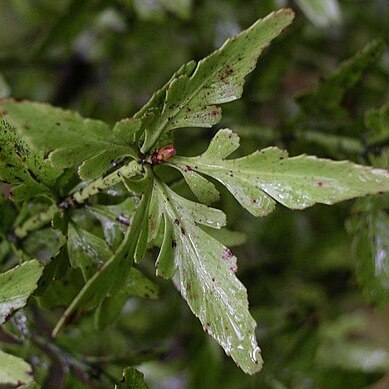Plants monoec. or dioec.; male strobili cylindric, stalked, fascicled at apices of branchlets; sporophylls bisporangiate, apiculus small; female branchlets solitary in axils of basal scales of arrested branchlets or sessile in phylloclades or replacing phylloclades. Carpidia 1-ovuled, decussate or spiral, thick, truncate at apex, axis ± fleshy. Ovules erect, surrounded by a basal disc forming a cupule, = or < the seeds. Lvs spirally arranged, ± caducous. Phylloclades formed of flattened, concrescent branchlets, with rud. lvs in form of minute denticles. Trees or shrubs. Spp. about 6, N.Z., Tasmania, New Guinea, Borneo, Philippines. The N.Z. spp. apparently all endemic.
Monoecious or dioecious trees or shrubs. Juvenile leaves functional, acicular. True adult leaves reduced to non-photosynthetic scales to 2 mm long; branchlets flattened to form cladodes. Male cones terminal on specialised axillary shoots, solitary or clustered. Female cones axillary or terminal, comprising 1-5 scales that become fleshy at maturity; ovules erect, surrounded at the base by a symmetrical aril; epimatium absent.

